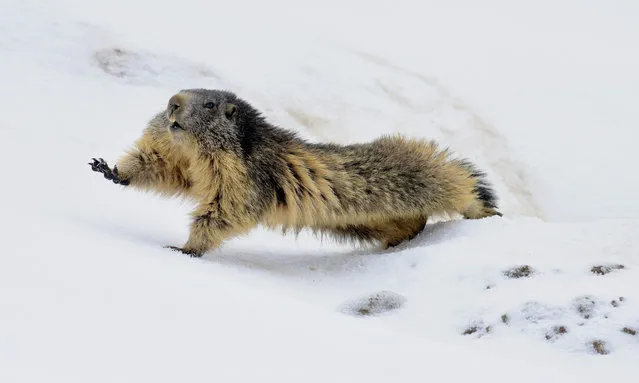
A marmot comes out of hibernation in Vanoise national park, in the French Alps. (Photo by Romain Barca)
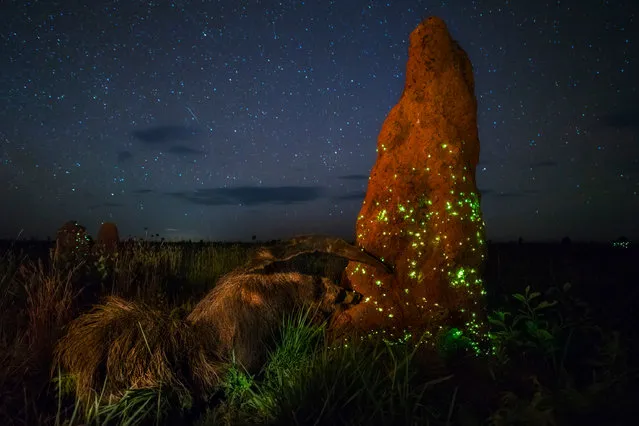
Marcio Cabral’s photograph of an anteater approaching a glowing termite mound at night that was stripped of its Wildlife Photographer of the Year award prize after judges noticed the anteater pictured is almost certainly a stuffed animal. (Photo by Marcio Cabral/Wildlife Photograp/PA Wire)
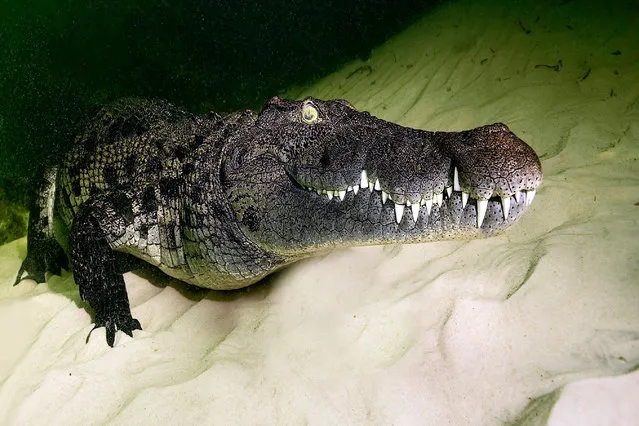
A ten foot long Nile Crocodile photographed on July 07, 2011 in Okavango River Delta, Botswana. Stunning pictures show how one of the planet's largest crocodiles made an incredible comeback – after the species was almost made extinct. In a dangerous and ultra-rare expedition, photographer Daniel Botelho and a team of divers captured 15ft nile crocodiles on camera in their natural environment, and came within INCHES of the colossal predators. The crocs live in the Okavango River Delta, Botswana and were hunted excessively by humans for their skin, to keep up with the high demand of leather goods. Because of National Laws brought in in 1968 and International Trade Regulations that took force in 1973, the crocs increased in numbers and are no longer endangered. Photographer Daniel, 30, from Rio de Janeiro, Brazil, spent eight days attempting to get up close with the crocodiles in June. (Photo by Daniel Botelho/Barcroft USA/Getty Images)
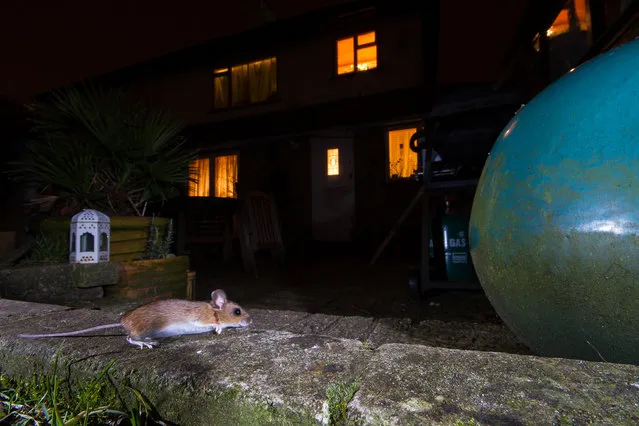
A wood mouse in urban area at night, UK. (Photo by Joshua Birch/The Mammal Society)
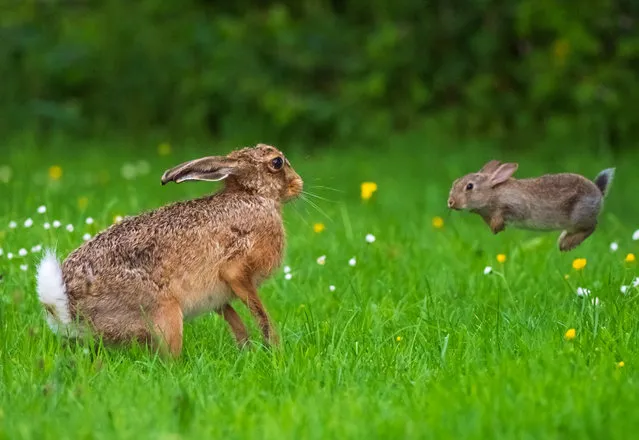
A baby bunny attacks a brown hare, four times its size at a farm in Shropshire in a rare mismatched fight. (Photo by Andrew Fusek-Peters/SWNS Agency)
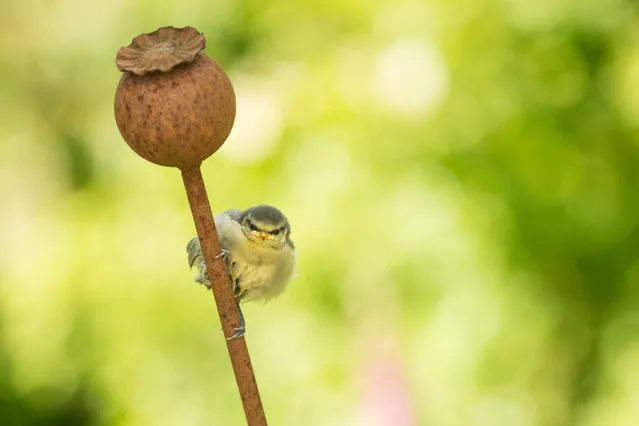
A fledgling blue tit clings on to a garden ornament in Stirlingshire, Scotland, UK. (Photo by Kay Roxby/Alamy Live News)
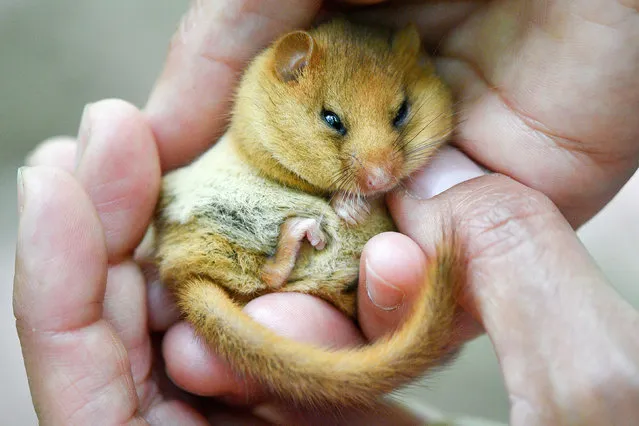
A volunteer checks a rare hazel dormouse as 20 breeding pairs were released into an undisclosed woodland location near Royal Leamington Spa in Warwickshire, UK. (Photo by Ben Birchall/PA Wire)
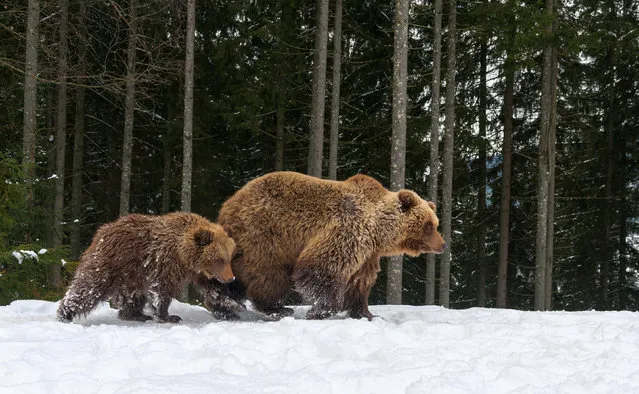
Bear mother and cub playing in the winter forest, Alaska. The Trump administration is moving to reverse Obama-era rules barring hunters on some public lands in Alaska from baiting bears with bacon and doughnuts and using spotlights to shoot mother bears and their cubs hibernating in dens. (Photo by Volodymyr Burdiak/Alamy Stock Photo)
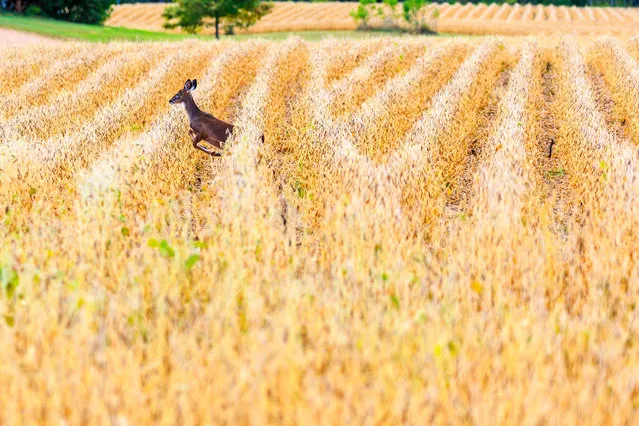
Female white-tailed deer running through a field of soybeans, Wisconsin, US. (Photo by Michael Tatman/Alamy Stock Photo)
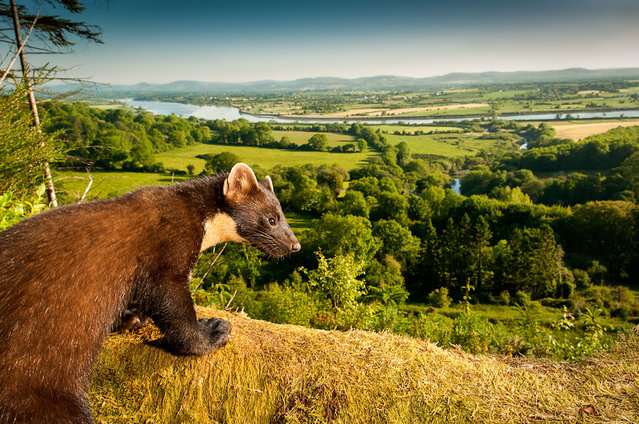
A pine marten – one of a few wild mammals doing well in Britain (although they number just 3,700). A fifth of the country’s wild mammals are at high risk of extinction, research shows. (Photo by Maurice Flynn/The Mammal Society)
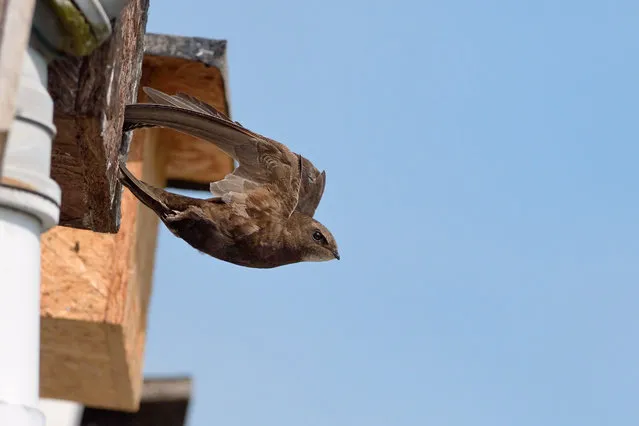
A common swift flies from a nesting box in Hilperton, Wiltshire, UK. In the last 20 years, Britain’s breeding population of the birds has halved. (Photo by Nick Upton/Nature Picture Library)
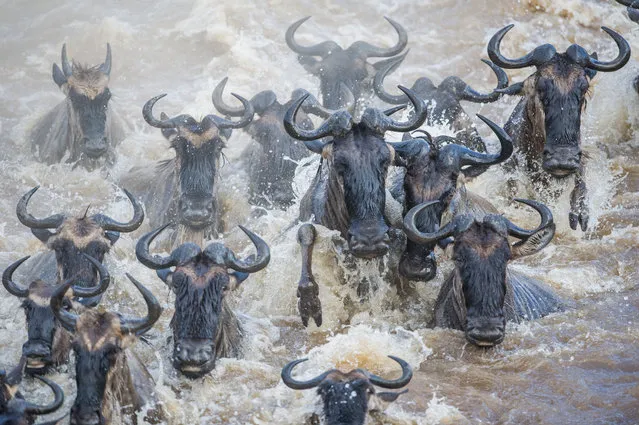
Wildebeest on migration in the Masai Mara, Kenya. (Photo by Ingo Gerlach/Caters News Agency)
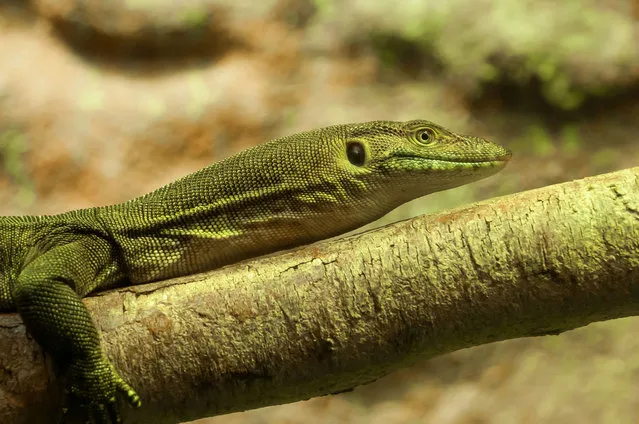
A Mitchell’s water monitor at Healesville Sanctuary near Melbourne, Australia. The lizard is on this year’s endangered species red list. Around 26,000 global species are under threat of extinction. (Photo by Robert Wyatt/Alamy Stock Photo)
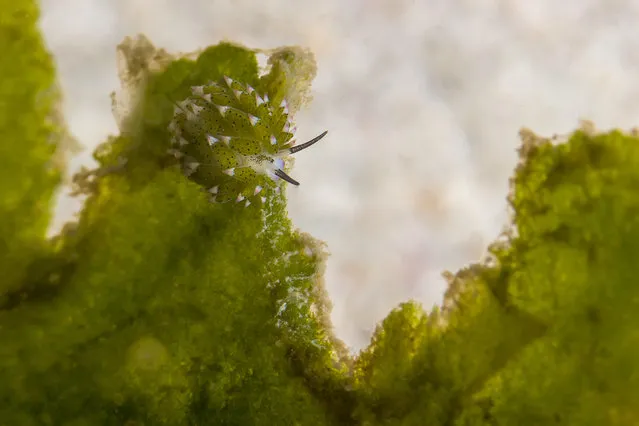
Leaf-sheep nudibranch (Costasiella kuroshimae), a type of sea slug, munches on algae, Rayong, Thailand. (Photo by Suwat Sirivutcharungchit/Alamy Stock Photo)
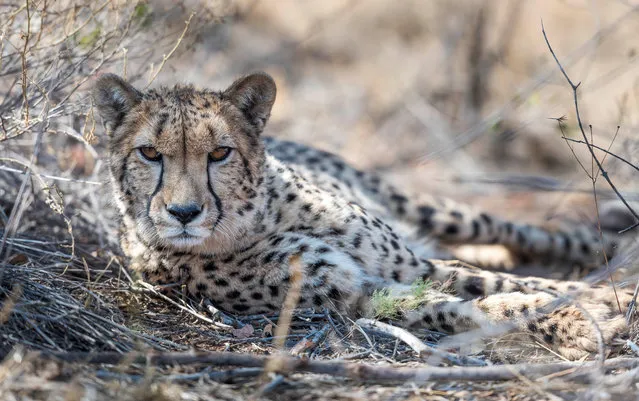
A cheetah, taken in Botswana, South Africa, September 2016. A conservation group has created a “cheetah school” to inform the villages of Botswana about the declining species. Over the past century, the world’s cheetah population has declined by 90%, and less than 7000 currently exist in Africa. One of the highest remaining cheetah populations is in Botswana, South Africa. However, these cheetahs live outside protected areas, in farmland regions where they come into conflict with people. The remaining cheetah population is under significant threat from lethal persecution by farmers concerned about the welfare of their livestock, and one conservation organisation is hoping to create peace between man and beast. Cheetah Conservation Botswana (or CCB) is a multidisciplinary organisation that combines scientific research, community engagement and education programs to help ensure a future for cheetahs in Botswana and around the world. (Photo by Doug Gimesy/Barcroft Images)
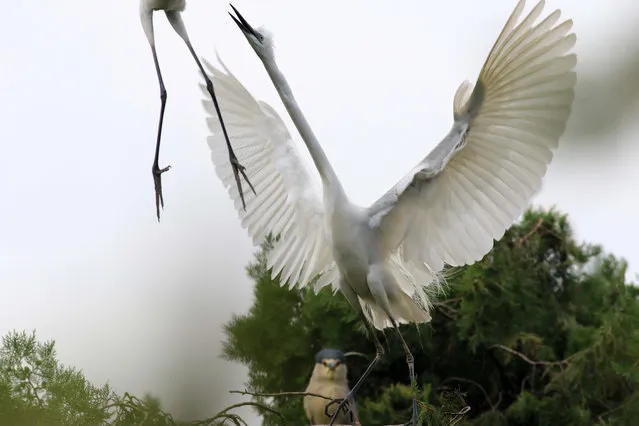
Egrets at Qidashan forest park in Huai’an, east China’s Jiangsu Province. (Photo by Pacific Press/Barcroft Images)
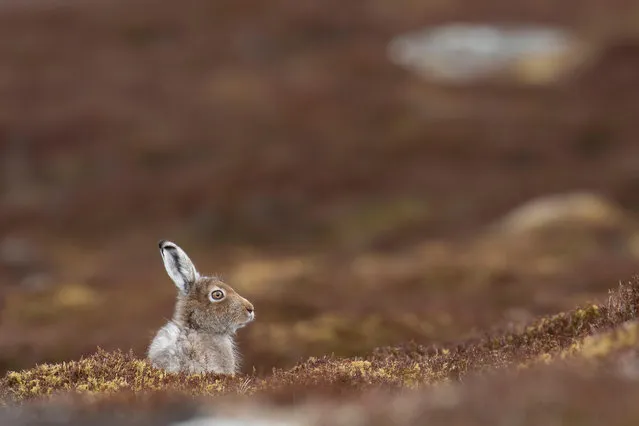
A mountain hare in the Cairngorms national park, Scotland. (Photo by Paul Carpenter/Alamy Stock Photo)
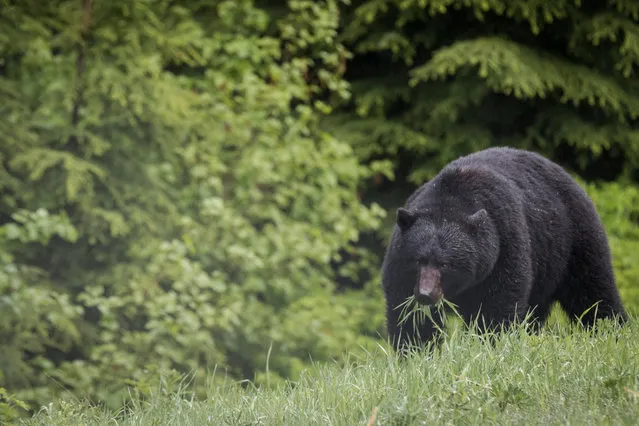
A lone black bear eating grass in the early morning just outside of Whistler, British Columbia, Canada. (Photo by Greg Norgaard/Alamy Stock Photo)
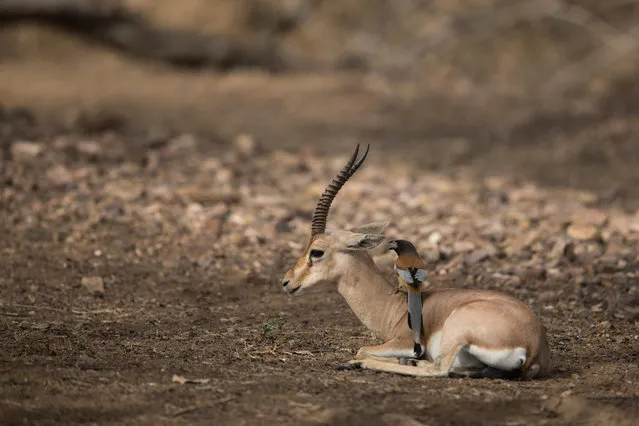
Chinkara or indian gazelle in Ranthambore national park, India. (Photo by Shivang Mehta/Alamy Stock Photo)
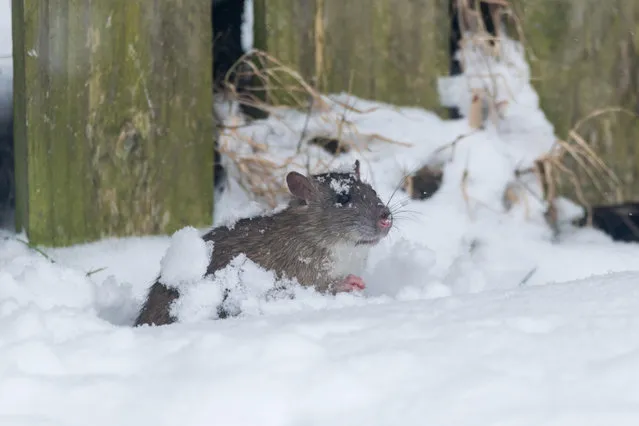
A rat forages for bird seed in a snowy garden in Pontrhydfendigaid, Ceredigion, Wales. (Photo by Ian Jones/Alamy Stock Photo)
08 Jul 2018 00:01:00,
post received
0 comments
